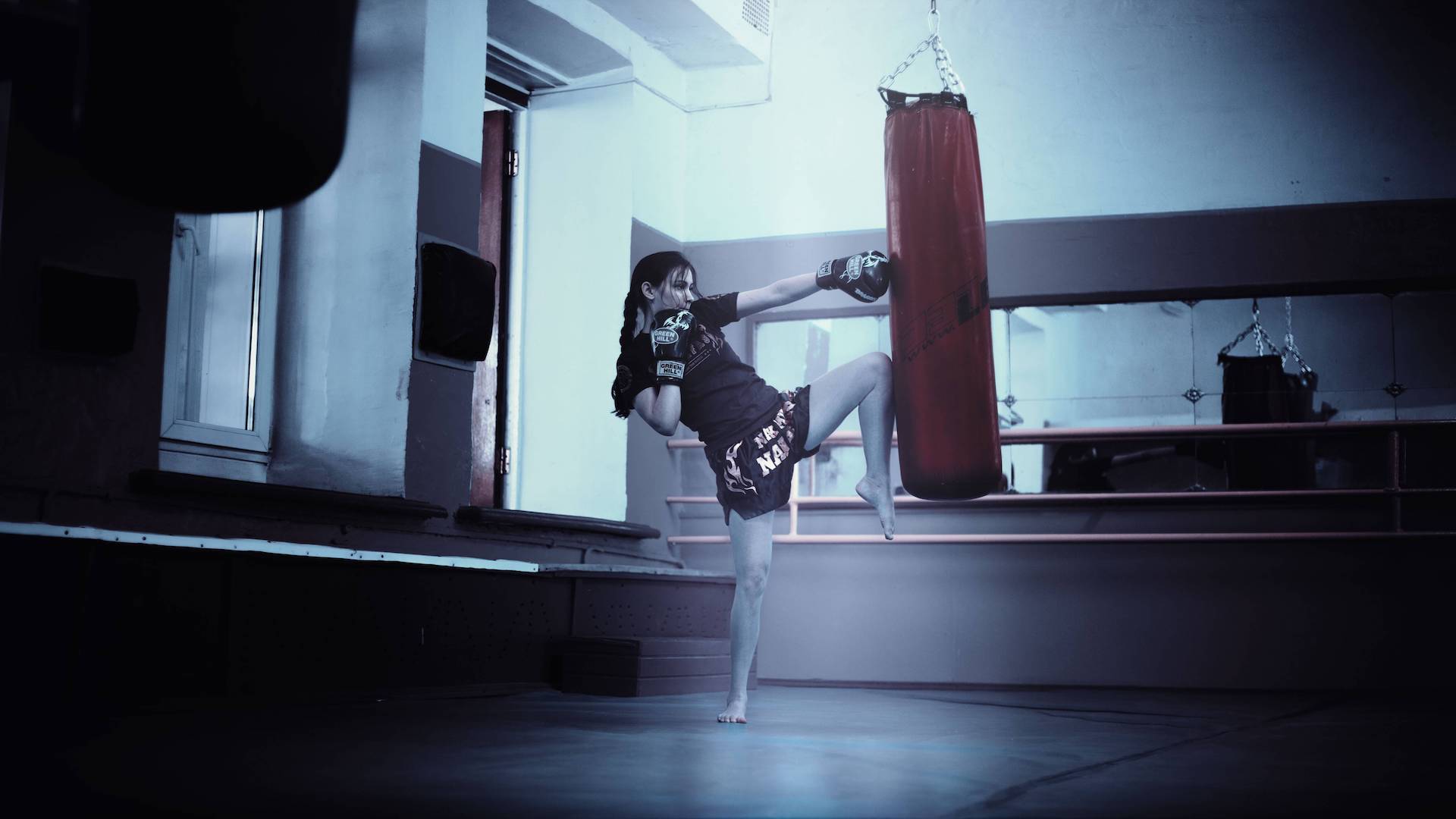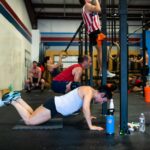Many prospective CrossFitters grapple with the perceived difficulty of joining this intense fitness community. Concerns about financial burdens, time constraints, skill level requirements, and finding the right CrossFit “”box”” (gym) often deter individuals from taking the plunge. This post aims to answer these concerns, providing practical insights and strategies to navigate the process and determine if CrossFit aligns with your fitness goals and lifestyle.
Is CrossFit Hard to Join?
Joining CrossFit isn’t as hard as it might seem. Most gyms offer structured entry programs, such as onboarding or foundations classes, which help you learn proper form and get familiar with the workouts at a comfortable pace. These programs are designed to ensure safety and build your confidence before jumping into regular classes.
CrossFit and Its Challenges
CrossFit’s explosive popularity stems from its high-intensity, functional workouts. However, the rigorous nature of these sessions frequently leads to perceptions that joining CrossFit is a significant hurdle. This difficulty isn’t solely about physical prowess; it involves various factors, including financial limitations, scheduling conflicts, and the need for proper technique and coaching. This article delves into these critical areas, equipping potential members with the knowledge to make an informed decision.
Cost and Financial Barriers
CrossFit box fees vary significantly. Some facilities offer budget-friendly options, while others cater to a higher-income demographic with premium membership packages. Initial membership fees can also represent a considerable upfront financial commitment. Moreover, purchasing specialized equipment (such as weightlifting bars or jump boxes) further complicates the financial picture, especially for beginners. Additional costs include potential hidden fees and escalating monthly costs as your fitness journey evolves.
Managing costs effectively is crucial. New members should carefully compare pricing structures and consider utilizing budgeting strategies. This might involve comparing monthly membership costs across different boxes, negotiating lower fees if possible, and looking for introductory deals or discounts. For example, some boxes offer discounted introductory programs or equipment rentals.
Financial resources play a critical role in CrossFit participation. New members often face a steep learning curve regarding initial costs, monthly fees, and hidden costs. This can be daunting for some, particularly for beginners. This article provides strategies to evaluate membership options, negotiate pricing, and uncover any hidden costs, allowing members to budget effectively.
Equipment and Supplies
CrossFit workouts necessitate diverse equipment. Classes can employ pull-up bars, jump boxes, kettlebells, and a host of other specialized gear. The upfront investment in these tools often proves to be significant. Box equipment rental is an option, but it may have an impact on the financial commitment.
The cost of purchasing CrossFit equipment can be considerable, particularly for advanced-level training. Many CrossFit boxes offer equipment for rent, while others require members to provide or purchase the gear, affecting the overall cost. Individuals should assess the equipment needs at potential boxes to determine the level of investment required, especially for specialised exercises or equipment.
The cost of equipment and the availability of rental options is paramount for prospective members. Initial equipment needs vary widely depending on the exercises and the level of commitment. Some exercises require significant equipment like pull-up bars, whereas others only require basic workout attire. Cost-effective choices include borrowing equipment from other CrossFitters or renting equipment through the CrossFit box.
Time Commitment and Scheduling
CrossFit workouts are typically intense, demanding considerable time. Classes frequently extend for 60 to 90 minutes and may require additional warm-up and cool-down time, influencing the time commitment of members.
Scheduling conflicts are a common concern. CrossFit workouts can easily clash with work, school, family obligations, or other commitments. Time management is key for successful CrossFit participation, as maintaining balance is essential. Individuals should consider various scheduling options, such as off-peak class times and the availability of different class lengths, and adopt time management strategies like time blocking or scheduling CrossFit first.
Fitting intense CrossFit classes into a busy schedule can require meticulous planning. The time commitment extends beyond class duration and often includes pre- and post-workout routines, such as stretching, nutrition and recovery. The intense workouts demand a structured schedule to ensure they do not interfere with other commitments or cause an over-commitment that compromises rest and recovery. Exploring the option of shorter or alternative class durations or times can be valuable in integrating CrossFit into an individual’s life, potentially alleviating scheduling conflicts.
Skill Level and Safety Concerns
CrossFit welcomes beginners, offering modifications for diverse skill levels. However, the intensity of the workouts necessitates proper form and technique to minimize injury risk. Experienced coaches and a supportive community are crucial for newcomers.
The high-intensity nature of CrossFit carries an inherent risk of injury if not approached with proper precautions and technique. However, the risk is mitigated significantly by experienced coaches, safety protocols, and careful consideration of individual fitness levels. Prospective members should seek out CrossFit gyms known for their skilled coaches and strong safety records to limit the risk of injuries. New members should prioritize proper form over pushing beyond their physical capabilities, seeking guidance from trainers whenever necessary.
Proper form and technique are vital in injury prevention within the CrossFit environment. Understanding the risk of injury is part of the assessment process for prospective members. Skill level assessments can offer insight into the suitability of CrossFit. Beginner-friendly classes and coaching strategies are available to help minimize risk.
Finding the Right CrossFit Box
Selecting the appropriate CrossFit box is paramount to a positive experience. A suitable facility should align with your goals, preferences, and values. Factors to consider include the gym’s community atmosphere and the quality of its coaching staff.
CrossFit’s unique community plays a crucial role in the experience. A positive and supportive community environment fosters a welcoming atmosphere for members. Evaluating the facility’s community atmosphere helps individuals determine if it aligns with their personality and values. The ideal environment should promote inclusivity, mutual support, and encouragement among members. Visiting potential CrossFit boxes and observing class dynamics offers valuable insights into the community aspect.
Commitment and Motivation
Consistency is essential in CrossFit, as it impacts progress and overall well-being. Maintaining motivation is equally vital for long-term success. A supportive community helps to sustain motivation.
Building consistent habits and motivation in CrossFit is often challenging due to the high intensity of the classes. Motivation is frequently inspired by the desire to achieve milestones and personal growth. CrossFit’s commitment to fitness demands a sustained level of dedication and self-discipline. Building a supportive social network within the CrossFit community can increase the likelihood of adhering to the required commitment levels.
Maintaining commitment and motivation in CrossFit necessitates self-discipline and effective strategies. Motivation can be sustained by a variety of approaches. These may include goal setting, tracking progress, celebrating achievements, and participating in competitions.
Accessibility and Inclusivity
CrossFit can be adapted for individuals with physical limitations or disabilities. Finding a CrossFit box that emphasizes inclusivity and provides modifications is important.
CrossFit emphasizes a positive community-focused approach for all individuals. Modifications to workouts and exercises cater to diverse fitness levels and physical abilities, encouraging accessibility and inclusivity. Understanding accessibility and inclusivity is key to ensuring that CrossFit is beneficial for all participants. Evaluating inclusivity within a CrossFit box is crucial to identify a facility that caters to your individual needs and preferences.
CrossFit is generally inclusive of individuals with disabilities. Adapting to different levels of fitness and physical abilities is fundamental to the fitness environment. Finding a CrossFit box that values inclusivity and promotes diversity is important to encourage access and understanding for all members. Looking for a box that incorporates various modifications and accommodations is essential for diverse needs and levels of fitness.
Learning Curve and Proper Form
Learning new CrossFit movements requires time and effort. Proper form is vital, and experienced coaching and guidance are crucial to avoid injury. Utilizing resources, like online tutorials, can complement in-person coaching.
Mastering CrossFit movements requires patience and consistent effort. Proper form is essential to avoid injury and maximize results. Experienced CrossFit coaches provide valuable support, helping participants refine their form and technique. Utilizing online resources can supplement in-person instruction and promote a comprehensive approach to skill development.
The learning process in CrossFit often involves mastering a range of exercises with correct form. A supportive coaching team and ongoing learning opportunities are essential for this. Seeking resources for learning fundamentals and techniques contributes to a smooth learning curve. The use of videos and other online resources can enhance learning and understanding.
Conclusion
Joining CrossFit can feel intimidating at first, but with my 7 years of experience, I can confidently say it’s worth it. Like anything, CrossFit has its pros and cons, but a good gym will make all the difference. My advice is to look for one that offers an onboarding program like foundations or ramp-up classes. These are designed to teach you proper technique and ease you into workouts safely. Avoid gyms that expect you to jump straight into regular classes without preparation—real coaching prioritizes safety and progression.
The CrossFit community is one of its biggest strengths. While you might start as the “new person,” most gyms are incredibly welcoming, and you’ll quickly feel like you belong. Plus, CrossFit is unmatched when it comes to getting into incredible shape. Nearly every CrossFit gym offers a free trial class, so you can see for yourself if it’s the right fit. If you’d like to try it at Eximo Fitness, feel free to reach out. I’d be happy to help you get started!








